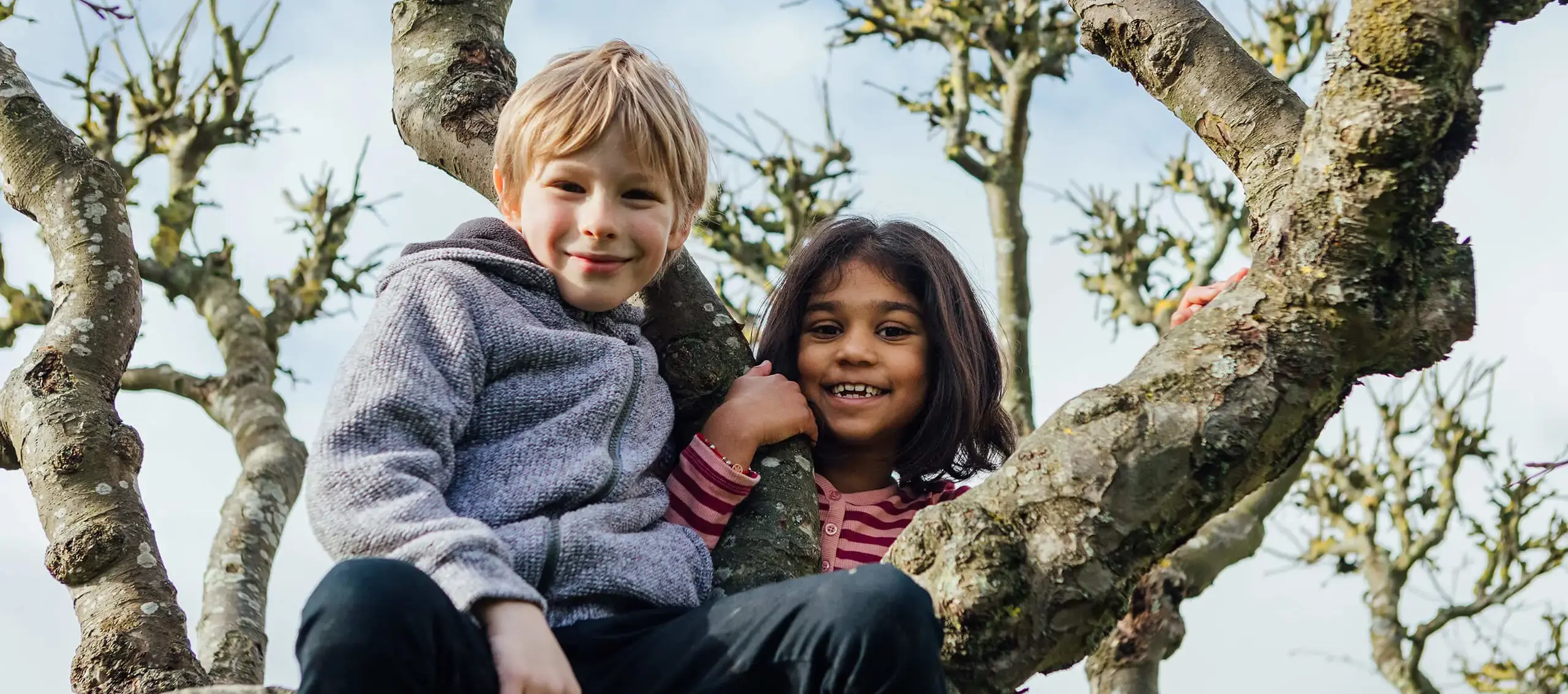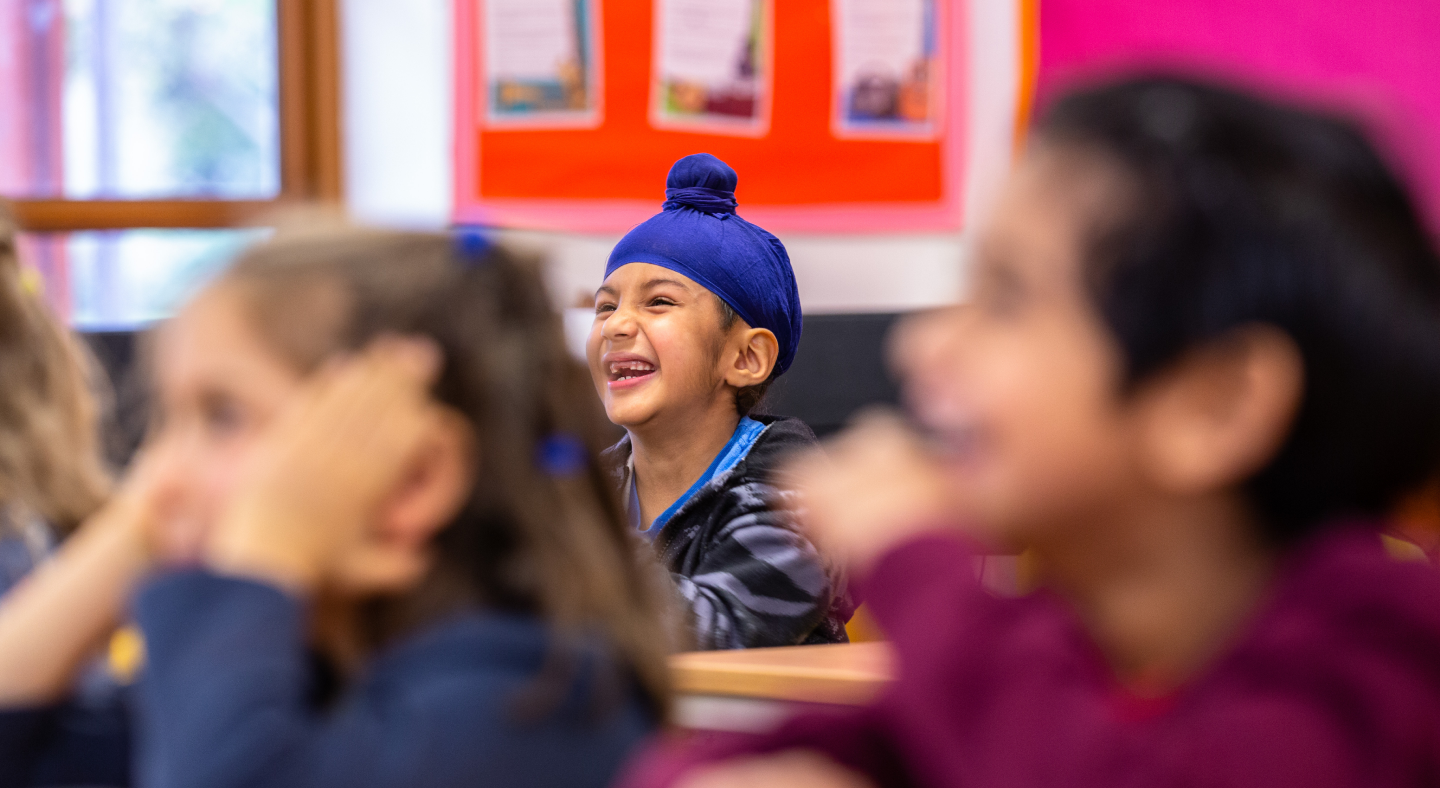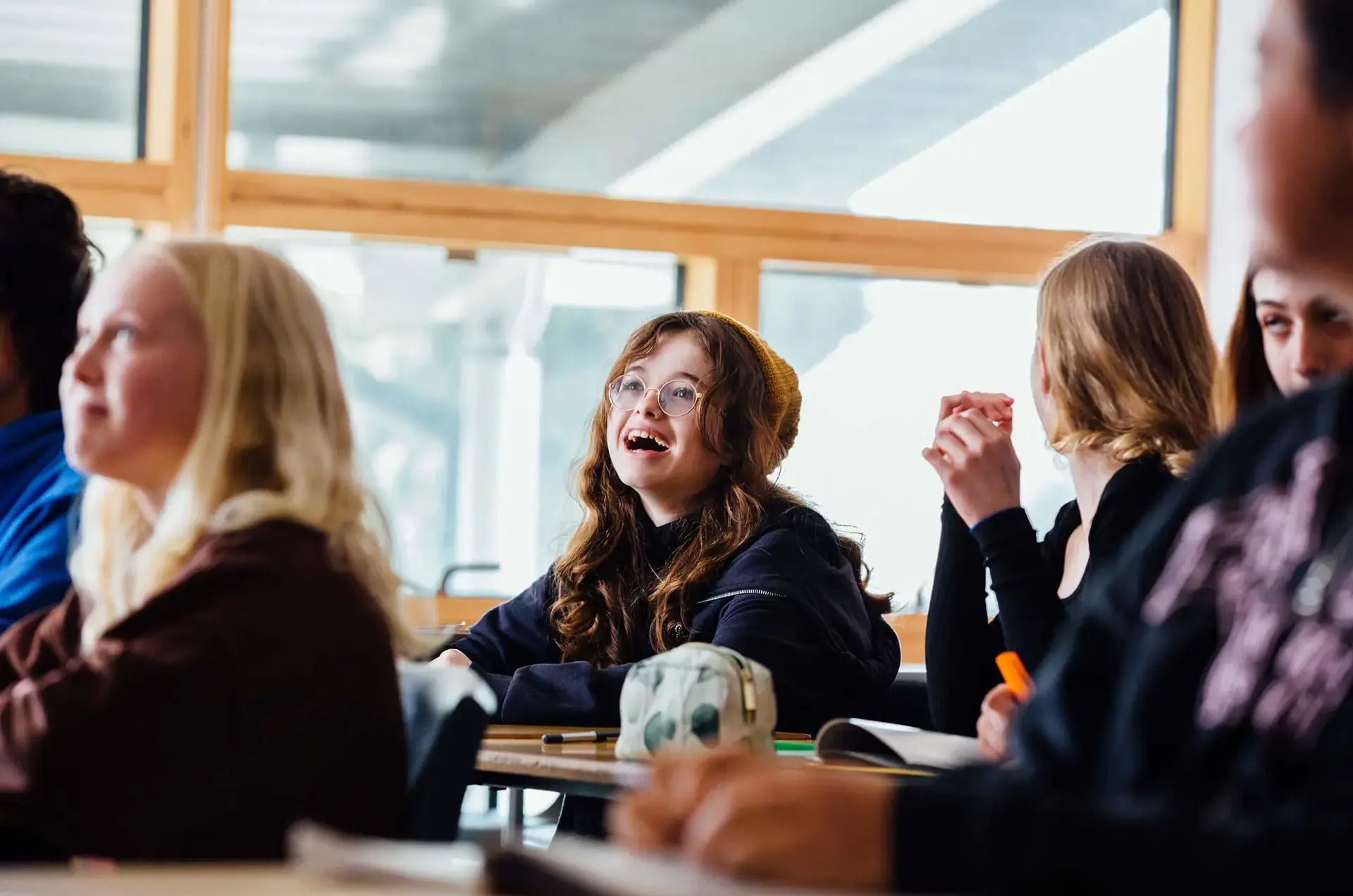Forest School in the Junior School
Where Curiosity Leads the Way
At St Chris, learning extends far beyond the classroom walls. Our Forest School invites students to explore, question, and create within the natural world. Outdoor learning nurtures curiosity, imagination, and a sense of belonging — helping students understand both the environment around them and their place within it.
We believe that a close relationship with nature is a vital foundation for growth. Through hands-on, child-led experiences in our beautiful outdoor spaces, pupils develop confidence, resilience, and respect for the world they share. Every session encourages students to see learning as a journey; one that evolves with the seasons and inspires wonder at every step.
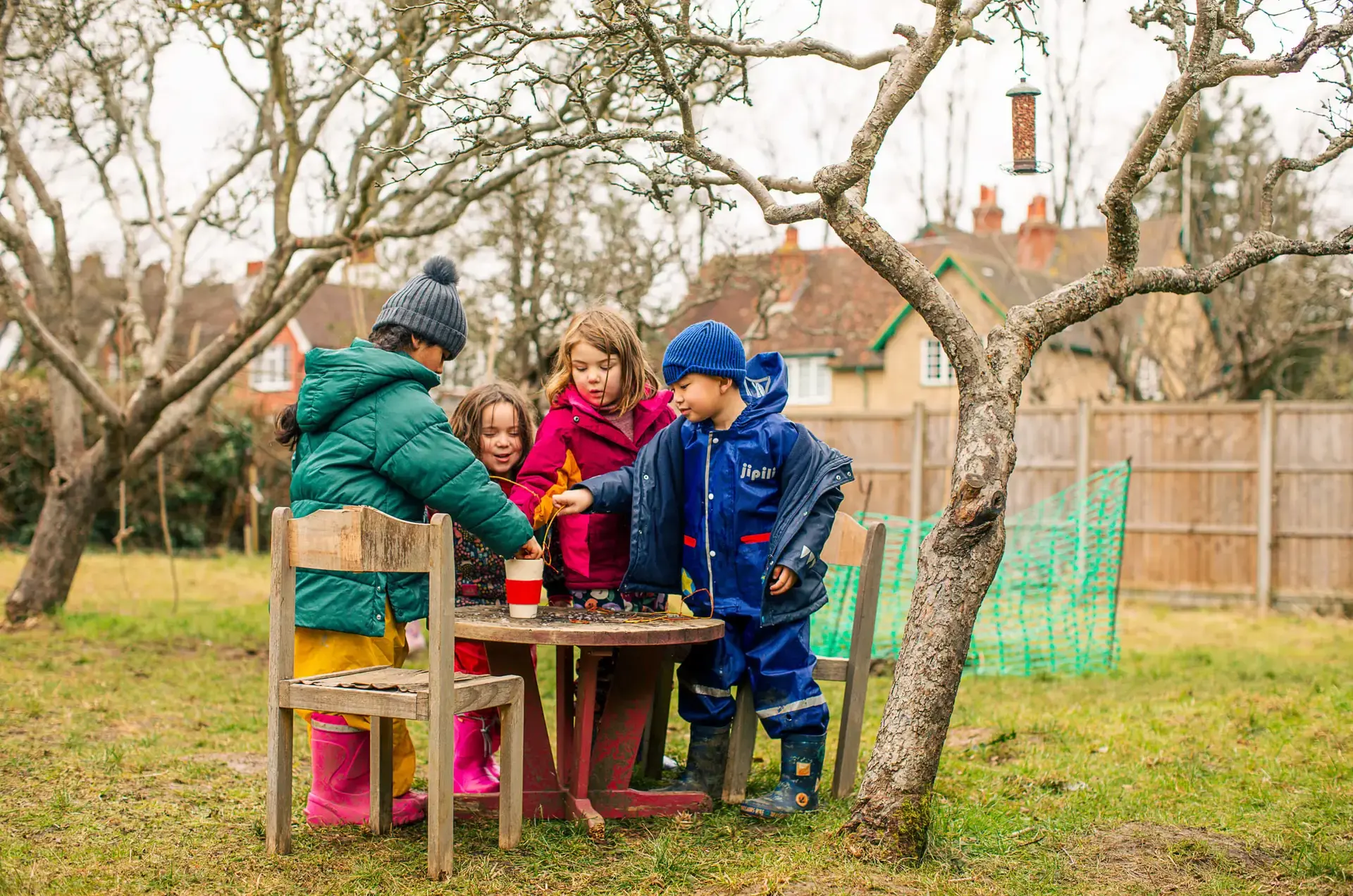
What is Forest School?
Forest School at St Chris is an approach to education that places students at the heart of their own learning. In our woodland and orchard spaces, students are encouraged to take supported risks, solve problems, and explore new ideas through meaningful experiences in nature.
Inspired by the Scandinavian principle of friluftsliv — “open-air living”, our Forest School embraces the joy and freedom of outdoor learning. It’s not a single subject or activity, but a philosophy that values curiosity, creativity, and the development of the whole child.
Sessions are guided by skilled practitioners who create a safe, supportive environment for exploration. Here, every student is recognised, trusted, and empowered to discover what they can do; building self-belief, independence, and a lifelong connection to the natural world.
Student-Led Learning in Nature
Set within our orchard, our Forest School area provides the perfect setting for child-led discovery. Here, students from Nursery to Year 6 learn to manage the unexpected, solve problems, and overcome physical and mental challenges in a nurturing, supportive environment.
Each session invites students to experience the rhythm of the seasons, the sensory richness of nature, and the stories woven into our landscape. Through exploration, imagination, and play, learning comes alive – helping students to understand both the world around them and their place within it.
Our approach is guided by six key principles of the Forest School community:
-
Frequent Outdoor Sessions: Learning in nature throughout the year.
-
Nurturing Nature Connection: Fostering a lifelong bond with the natural world.
-
Child-Centred Learning: Encouraging curiosity, choice, and supported risk-taking.
-
Holistic Development: Building resilience, confidence, independence, and creativity.
-
Belonging: Creating strong, trusting relationships in a safe environment.
-
Qualified Leadership: Sessions led by experienced, continually developing practitioners.
The Benefits of Forest School
| A Classroom Without Walls |
|---|
|
The outdoors is the ultimate learning environment. We see students outdoors demonstrating greater engagement, motivation, and joy in learning — qualities that extend far beyond the forest. |
| A Place to Be Themselves |
|
In nature, students find freedom. They communicate openly, take initiative, and express themselves with confidence and creativity. |
| Inclusive and Holistic Learning |
|
Forest School supports every kind of learner, particularly those who thrive through practical experience. It builds self-esteem, empathy, and a strong sense of agency. |
| Building Skills For Life |
|
Collaboration, communication, and problem-solving are just some of the lifelong skills developed in Forest School. Every student succeeds in their own way — no one can fail in the forest. |
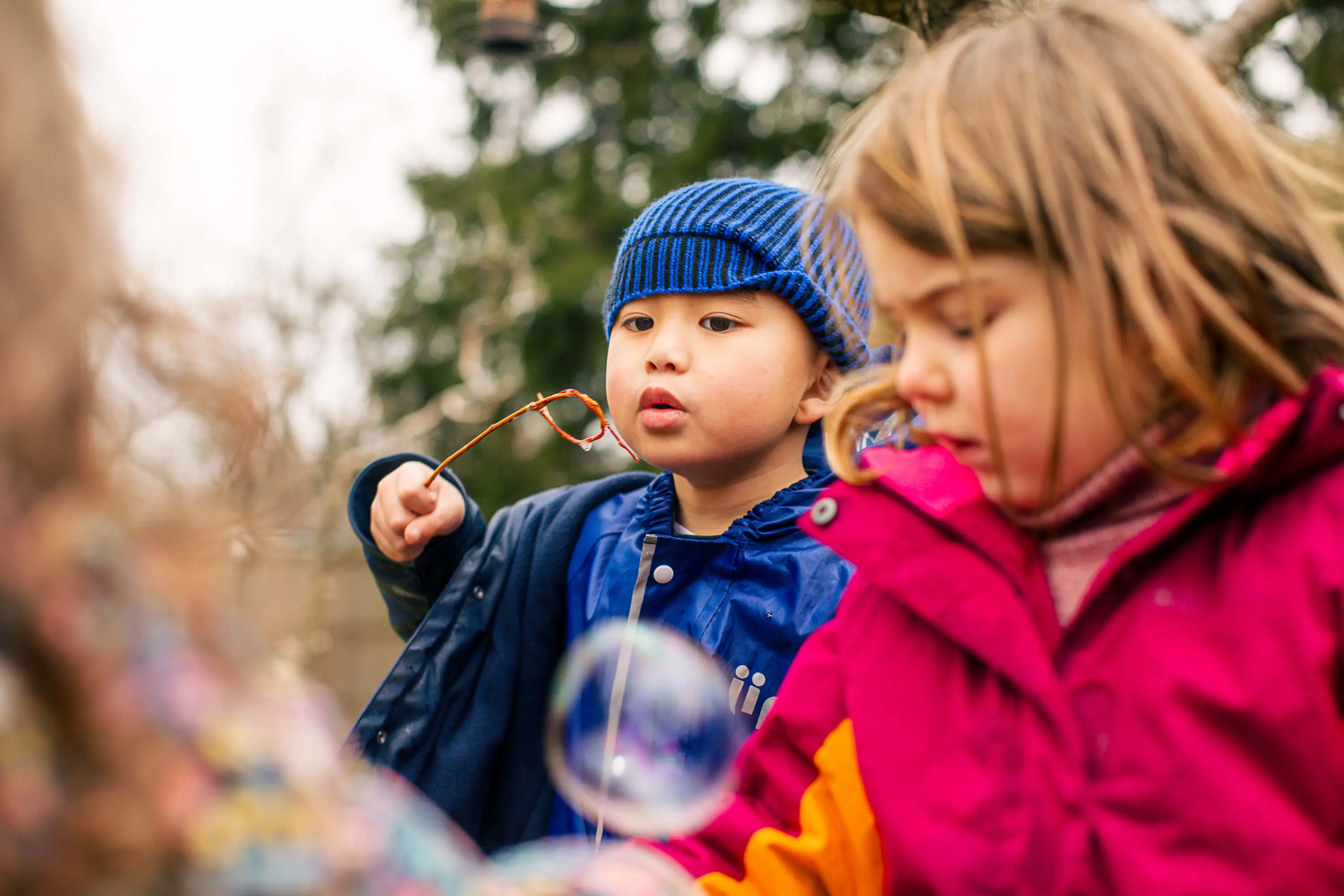
Forest School Curriculum
Learning and Discovery in Every Year Group
At St Chris Junior School, our Forest School curriculum grows alongside our students. From Nursery through to Year 6, each stage builds on the skills, confidence, and curiosity developed in the years before. Every student experiences the joy of learning outdoors; exploring nature through practical, hands-on activities that inspire creativity, independence, and care for the world around them.
| Nursery |
|---|
|
Our youngest learners begin their Forest School journey by exploring the wonders of the changing seasons. Sessions invite students to expand their awareness of the natural world through sensory play, new vocabulary, and gentle self-regulation – recognising when they feel hot, cold, or tired. Practical, hands-on activities build dexterity and confidence: children handle sticks and ropes, practise pulling, pushing, and twisting, and take part in tasks that strengthen their fine and gross motor skills. Along the way, our Forest School Leader encourages children to notice simple patterns and cycles in nature and introduces the fundamentals of fire awareness in a calm, guided way. |
| Reception |
|
In Reception, Forest School is about making connections between ideas, experiences, and the environment. Students are encouraged to ask questions such as, “What do I notice outside?” and to explore the changes in weather, light, and the world around them. Through conversation and exploration, students learn about caring for nature and one another. They compare observations, discuss what they’ve seen before, and share ideas with their peers. Sessions remain highly practical, with supported opportunities to take measured risks, explore movement, take turns, and reflect on how to stay safe. |
| Year 1 |
|
Forest School in Year 1 encourages students to look more closely at their surroundings and to begin thinking about how they feel outdoors. Students take part in treasure hunts, matching activities, and games that promote curiosity and awareness. They learn to keep safe around sticks and branches, practise tying a shoelace knot, and build on their understanding of fire awareness. Each activity supports self-reflection, helping children to develop mindfulness and a personal connection to the natural world. |
| Year 2 |
|
For Year 2, Forest School deepens curiosity and practical skill. Students are introduced to tools such as loppers and secateurs for simple making activities and begin to recognise the features of plants and animals – often linking this learning to classroom science topics. Students explore nature’s interdependence, asking “What do things need to live?” and developing an understanding of habitats and ecosystems. They also learn the clove hitch knot, using it to build swings, ladders, and tripods, and discuss how to look after one another while at play. |
| Year 3 |
|
Weekly sessions in Year 3 invite students to experiment creatively with natural materials such as willow, hazel, clay, ice, and apples. Students learn tension knots and lashings, using them to design and build. As they explore the environment, students look at soil types, discover how plants make food, and learn to identify wildflowers, invertebrates, and birds. These experiences nurture observation, understanding, and the ability to link cause and effect; especially when managing risks safely. |
| Year 4 |
|
By Year 4, students are ready to explore and classify the variety of leaves, plants, and animals found in our local environment. Students learn how to use knots and tarps to create shelters and safely use a bowsaw to cut logs for a fire. Each session strengthens their awareness of safety – for themselves, for others, and for wildlife. Students also learn how to read temperature accurately and discuss how to minimise risks during outdoor play and exploration. |
| Year 5 |
|
In Year 5, Forest School sessions explore the relationship between time, light, and nature. Students learn about shadows and the position of the sun, discovering how to track time using natural observations. Throughout the year, they study plant lifecycles, seed dispersal, and observe the development of tadpoles in our pond. Practical skills continue to grow, with increasing independence in using knots, sticks, and tarps to create structures and play spaces. |
| Year 6 |
|
Forest School for our oldest Junior School students focuses on communication, observation, and reflection. Vocabulary work is woven into outdoor experiences, with students practising descriptive language to compare and describe natural objects such as sticks, birds, and textures. They explore singular and plural forms, use adjectives effectively, and construct simple affirmative and negative sentences. Through clear instructions and shared dialogue, pupils strengthen both their language skills and their confidence to express themselves in the outdoor classroom. |

